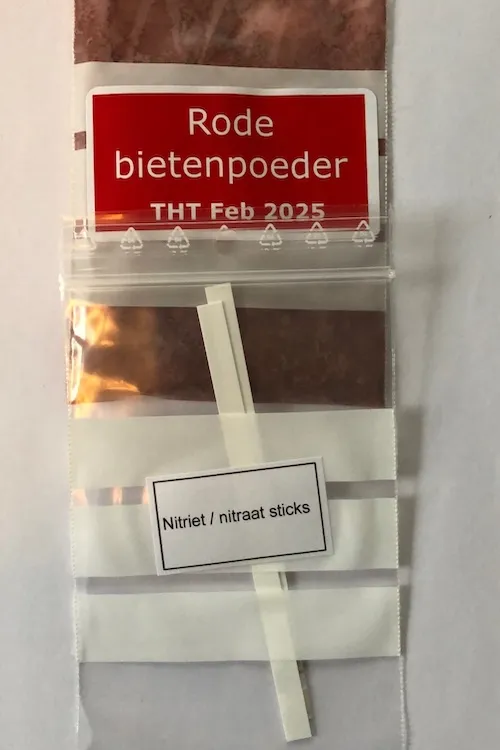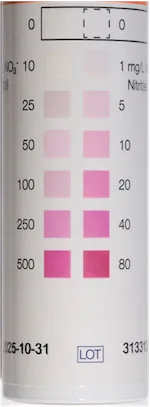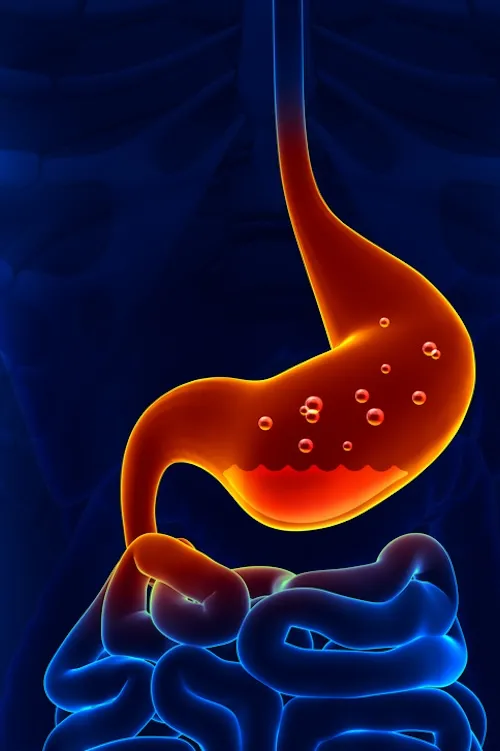Nitrate – nitrite test
€ 16,95 excl. VAT
Nitrate is converted into nitrite in the body, and especially in the mouth (saliva). Nitrite is then converted into nitric oxide (NO) in the body. This is a very important signaling substance in our body. This test measures how healthy our oral flora (presence of nitrate reducing bacteria) is, and nitrate can be converted into nitrite.
Description
Because nitrite accumulates in saliva due to the reduction of nitrate in the oral cavity, determining nitrite concentrations in saliva can be a simple means of determining the presence or absence of nitrate-reducing bacteria. However, the use of salivary nitrite as a marker for endogenous NO production, both by oxidation of NO and from dietary sources, is entirely dependent on the uptake and excretion of nitrate by the salivary glands and the subsequent reduction of nitrate to nitrite by tongue bacteria.
There are steps in the pathway that can be disrupted and lead to changes in salivary nitrite. Each step is described as follows:
- Nitrate uptake (by oxidation of NO or by diet) in the salivary glands: Recently, the sialic acid (SA)/H+ cotransporter was reported to be involved in the uptake of nitrate in the salivary glands.
- Nitrate secretion by salivary glands: The amounts of saliva produced vary depending on the type and intensity of stimulation, with the largest volumes occurring with cholinergic stimulation.
- Oral bacterial nitrate reduction: Humans lack a functional nitrate reductase, so nitrate reduction in saliva is dependent on nitrate-reducing bacteria in the oral flora.
- Oral pH: A healthy oral pH is between 6.5 and 7.5. The pKa of nitrite is 3.4, so any condition that lowers the pH in the oral cavity can destabilize nitrite and affect the use of salivary nitrite as a measure of nitrate reduction.
As a result of this human nitrogen cycle and the enterosalivarian circulation of nitrate (both from diet and from endogenous NO production) and its subsequent reduction to nitrite in the mouth, salivary nitrite sampling can be used as an accurate representation of the or absence of nitrate reducing bacteria.
Saliva offers a number of advantages as a biological compartment for diagnostics. There is sufficient evidence to show that increased circulating levels of plasma nitrite correlate with changes in blood pressure. In addition, circulating and salivary levels of nitrite increase after a nitrate load and eradication of oral bacteria cause a decrease in salivary nitrite and an increase in blood pressure. On the contrary, as NO availability decreases, both plasma and salivary levels of nitrite decrease. Whether enough NO is produced by the vascular endothelium to form nitrite and nitrate in the circulation, which is then concentrated in our salivary glands, or whether enough nitrate is ingested through the diet, this will show up as nitrite in the saliva. By understanding the basis and rationale for salivary nitrite sampling and recognizing its limitations, this non-invasive diagnostic can provide an accurate assessment of whole-body NO availability and provide physicians and patients with new information about cardiovascular risk and NO -homeostasis. Measurements of salivary nitrite can provide an indirect measure of people’s ability to reduce nitrate.
Nitrate is converted into nitrite in the body, and especially in the mouth (saliva). Nitrite is then converted in the body to nitric oxide (NO). This is a very important signaling substance in our body. This test measures how healthy our oral flora (presence of nitrate reducing bacteria) is, and nitrate can be converted into nitrite.
The test-set
The test-set contains 2 stris:
- Use 1 strip is for a measurement when you are sober (no food consumed)
- Use 1 strip for a measurement 1 hour after drinking beetroot juice (powder).
Lets go!
When you are sober:
- Wash your hands carefully and take 1 strip from the package and then close the package well.
- Take some saliva from your mouth with the tip of your finger and place it on the indicator pad of the strip.
After 60 seconds, compare the color of the strip with the distribution in the photo. You hold the strip horizontally with the color pads to the left.
The right row is the nitrite value; this should be around 5 mg/l. The left row is the nitrate value. This can be very low if you perform the measurement on an empty stomach or if you consume little nitrate-rich food (such as spinach or beetroot).
Measurement 1 hour after drinking beetroot juice:
- Add the beetroot powder (13 grams) to 300 ml of water and drink it.
- Repeat the test after 1 hour and read the nitrate and nitrate values.
Show only reviews in English (0)
You must be logged in to post a review.






Reviews
There are no reviews yet.